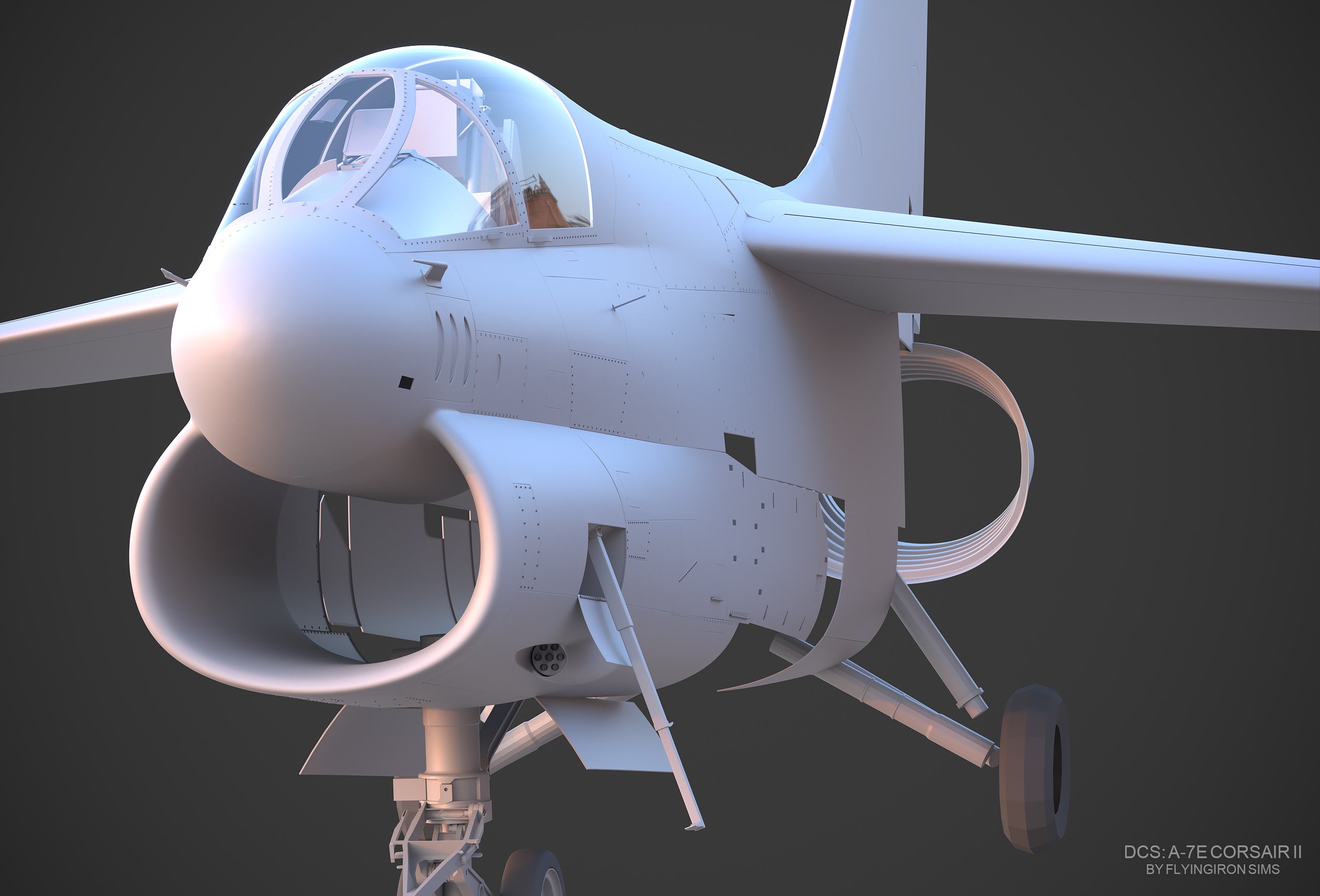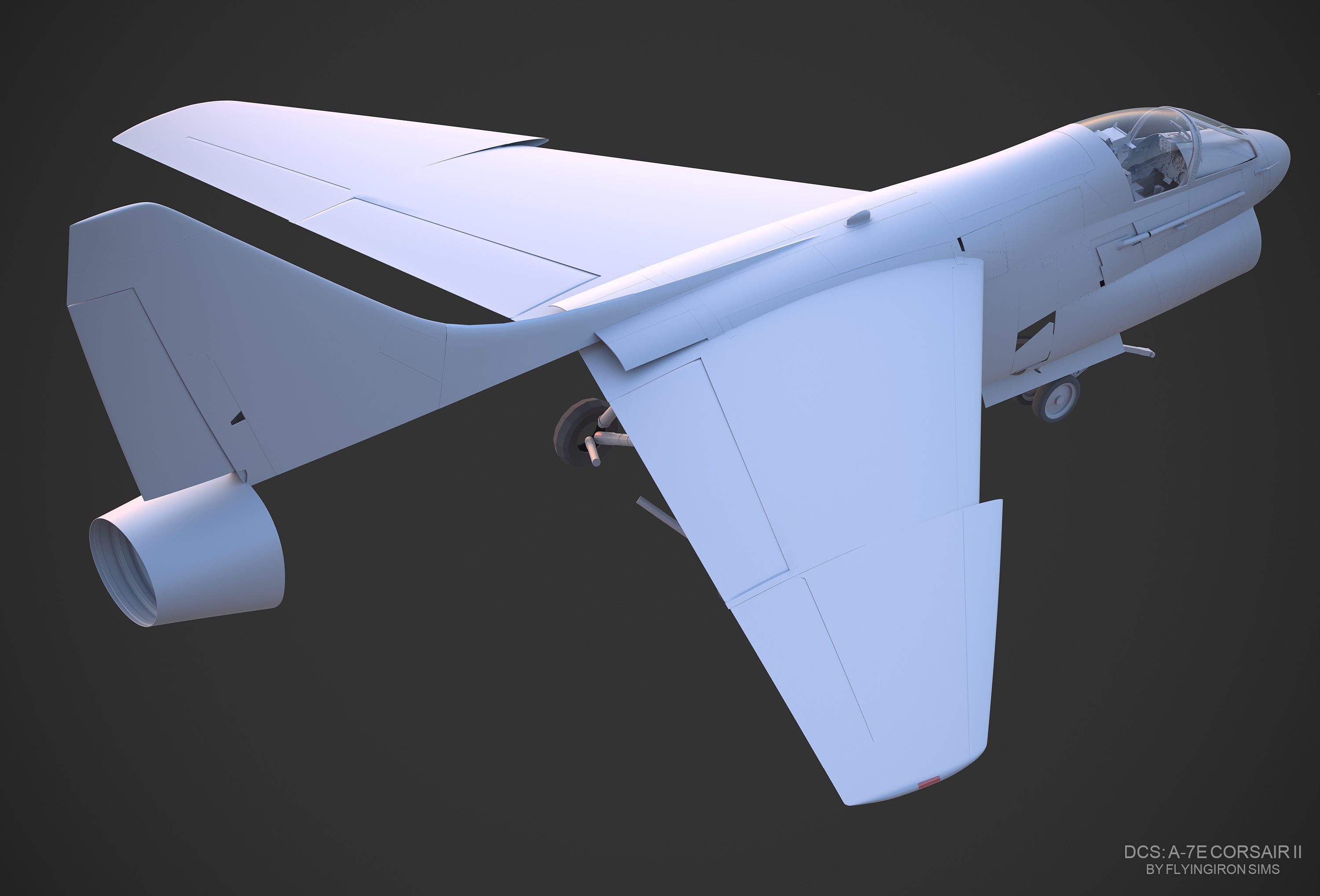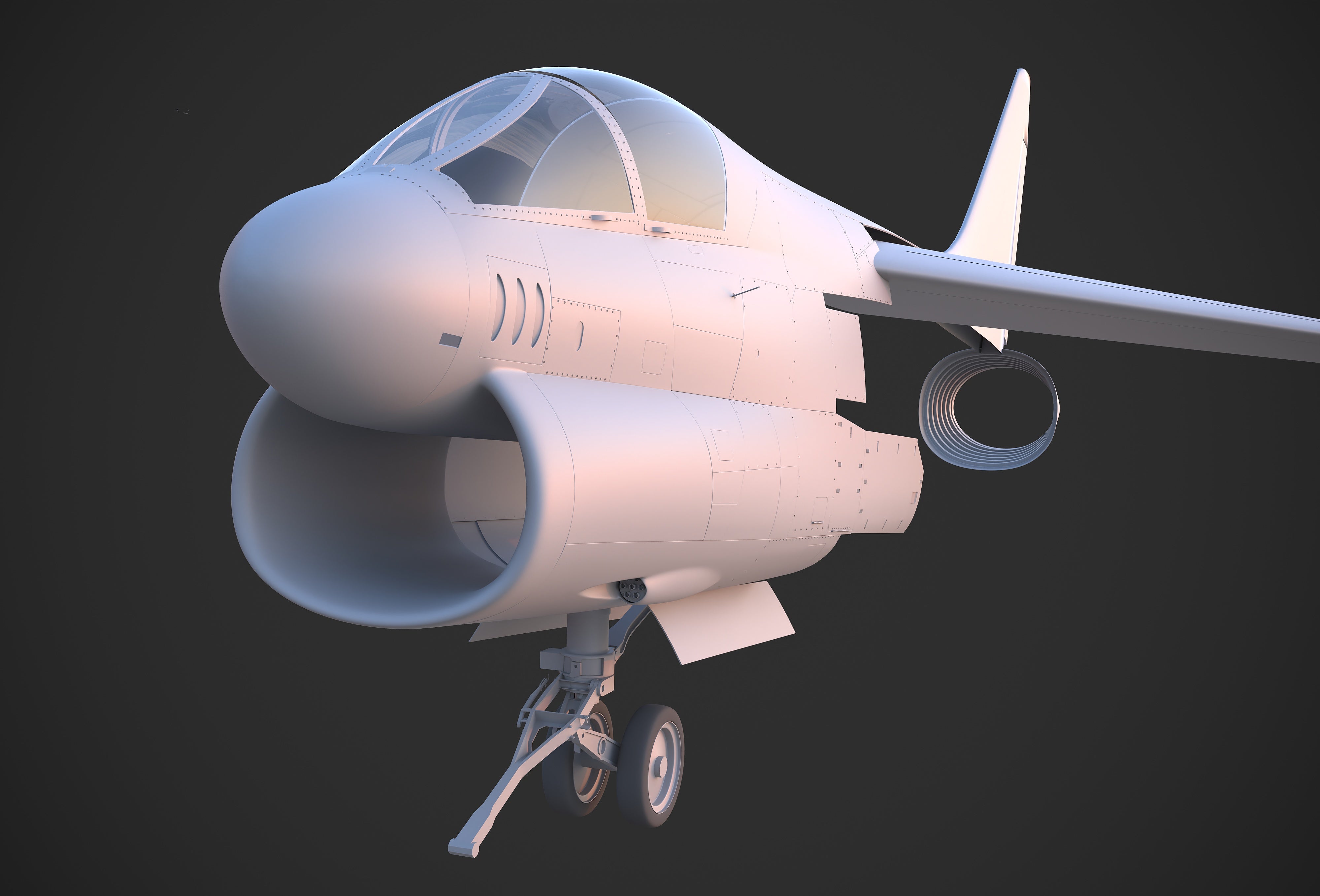Greetings!
Today I'll discussing our upcoming DCS module; the LTV A-7E Corsair II. It's been a little while since our last update, apologies for that! You'll be pleased to know the only reason I haven't had time to write an update blog, not because of other priorities, but simply because we've been so busy working on the A-7 itself!
Overall development has been progressing wonderfully & we've picked up the pace significantly since our last update. In previous blog posts I've discussed developing the A7 in phases; I'm pleased to say that we completed Phase 1 of development several weeks ago and are well into development of Phase 2. Our development roadmap has 4 main phases, after which the A7 will be ready for release.

Phase 1 of development was largely focused on learning the SDK, setting up code structures & placeholder systems and so on. Some of our goals for Phase 1 included:
- SFM (for AI) setup
- Basic test EFM (Flight Model)
- Test AV Device (HUD)
- Code structures & prototyping for core systems (Fuel, Electrical, Hydraulics, Gear etc)
- Simplified simulation of TF41 engine
- + Many, many more
With all of these goals now achieved, Phase 2 is well under way and is focused on the expansion & realistic modelling of core systems, the first iteration of our full-fidelity Flight Model, AV Devices modelling, prototyping Nav systems, Tac Computer & more.
With all that in mind, let's go through some of the details of what we've been working on these past few weeks.
Art & Modelling
3D Art has been primarily focused on the external model recently, with the next 'pass' of detailing well under way. Alex has taken on some new methods & techniques, giving greater flexibility to his workflow and ultimately resulting in more detailed modelling and a lesser reliance on normal maps, giving a 'deeper' and more realistic look. This approach has been used to build up panels in detail, with progress coming along nicely.
I encourage you to join our Discord, as we regularly post mini-updates & previews there showcasing Art progression.



Fuel Systems
Fuel systems are now simulated in a moderate level of detail; fuel tank locations, capacities, shutoff valves, flow logic & fuel flow rate are currently simulated and working accurately. As per the real aircraft, Wing Tanks are used first, then the Aft Fuselage Tanks, Mid/Fwd Tanks & finally the Sump Tank. All fuel in the A-7E is first routed into the Sump tank, from there flowing into the engine to meet fuel demands.
The fuel system in the Corsair is designed to be as automated as possible, and requires minimal pilot input (that doesn't mean there isn't alot happening under the hood!). With the core of the fuel systems in place, our next focus for fuel will be on integrating cockpit switch functionalities, setting up gauges/displays related to fuel, pump logic/setup and prototyping fuel damage systems (eg leak in a fuel line).

Image from A-7E NATOPS Flight Manual (1989)
Electrical Systems
Work is now beginning in earnest on fleshing out the electrical system; this is one of our top priorities at the moment as all avionics & sensors will of course be powered from & connected to the electrical system. Virtually all aspects of the electrical systems will be simulated in detail.
The A-7E has no internal battery, and is powered by an AC Generator that comes online >43% RPM. DC Power is supplied by a transformer-rectifier in the right equipment compartment, continuously providing 200 amps of current @ a nominal 28V DC.
The aircraft is equipped with an Emergency Power Package (EPP), capable of outputting both AC & DC power to the Emergency bus and if selected, the primary power bus. Below is an overview of the distribution of power to various buses in various conditions

Image from A-7E NATOPS Flight Manual (1989)
Flight Model
Our basic Flight Model is now done & dusted, and features accurate calculations for Lift, Drag, basic stall behaviour, control surface simulation and multi-component force calculation (calculating forces per surface, as opposed to treating the entire aircraft as one body). With that done, we're now feeling much more confident & ready to start development on the first iteration of the full-fidelity Flight Model.
We had some setbacks & delays here due to missing some key moment/force data, however we're happy to say that we've managed to get past this and obtain the necessary data to begin modelling. Our Flight Model is primarily being built from actual wind-tunnel test data of an A-7 in order to ensure the highest accuracy. To supplement the data, we have been working on several different CFD & experimental research methods. This not only provides a wealth of additional data to enhance our FM and supplement any missing data, but it allows a great degree of accuracy, as our experimental models can be validated against the real-world Wind Tunnel data to ensure all the data aligns.
Whilst the FM is possibly the most difficult & daunting aspect of developing a DCS module, we're confident that we are now well on track to produce a high-quality and accurate simulation that stands up to the high-standards of DCS World. Recently work here has been focused on mass handling & moments of inertia related to changes in fuel weights, which is now complete. With that done, work is currently focused on converting the huge amounts of wind-tunnel data into useable table data that can be integrated into code.
HUD
Whilst we don't want to share any screens just yet, a placeholder HUD has been developed & implemented successfully, complete with all the basic Nav & Flight elements. The Corsair features a HUD that was truly innovative for it's time and arguably the first 'Modern' HUD seen in a US Aircraft. Below are 2 great videos demonstrating some features of the HUD.
We hope this scratches the itch for some more information on how the A-7 is coming along! As always, if you have any questions feel free to leave a comment, or drop in to our Discord or Facebook channels.
Stay safe & warmest regards,
Dan K
FlyingIron Sims

Looks great. This report builds confidence. Thx for the HUD videos from period, they explained HID functionality in surprisingly detailed way.
A-7E is the plane from my favourite era of aviation when planes already had modern performance, but there weren’t flying computers yet.
Is this going to be the Navy version that had an afterburner or the slower version ?
Leave a comment